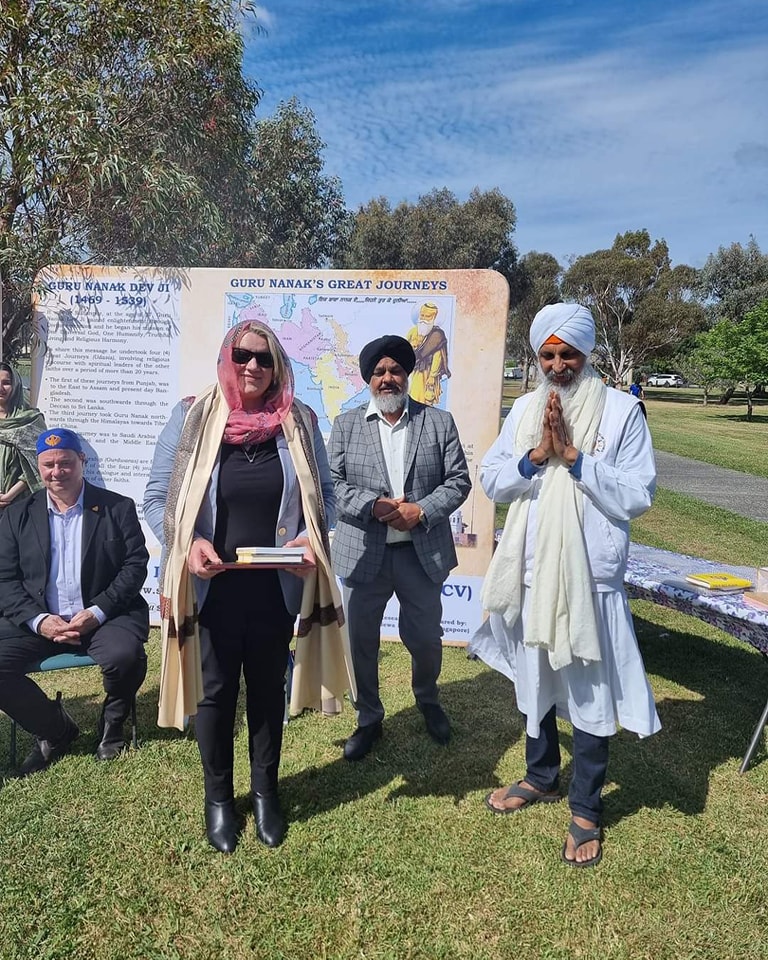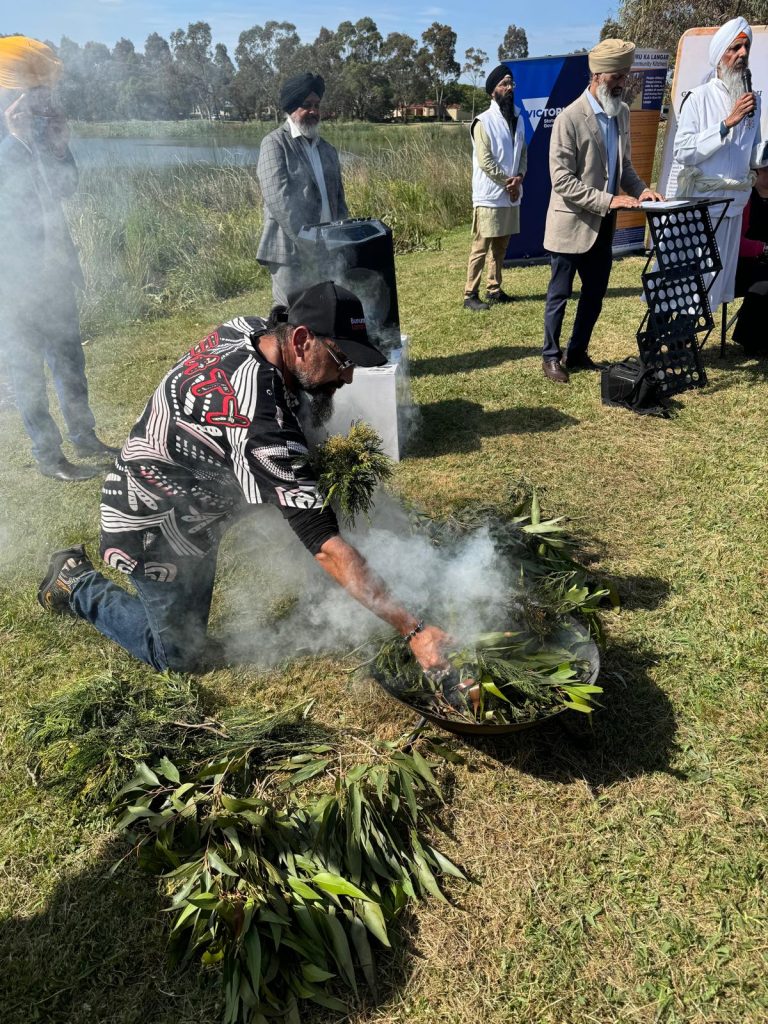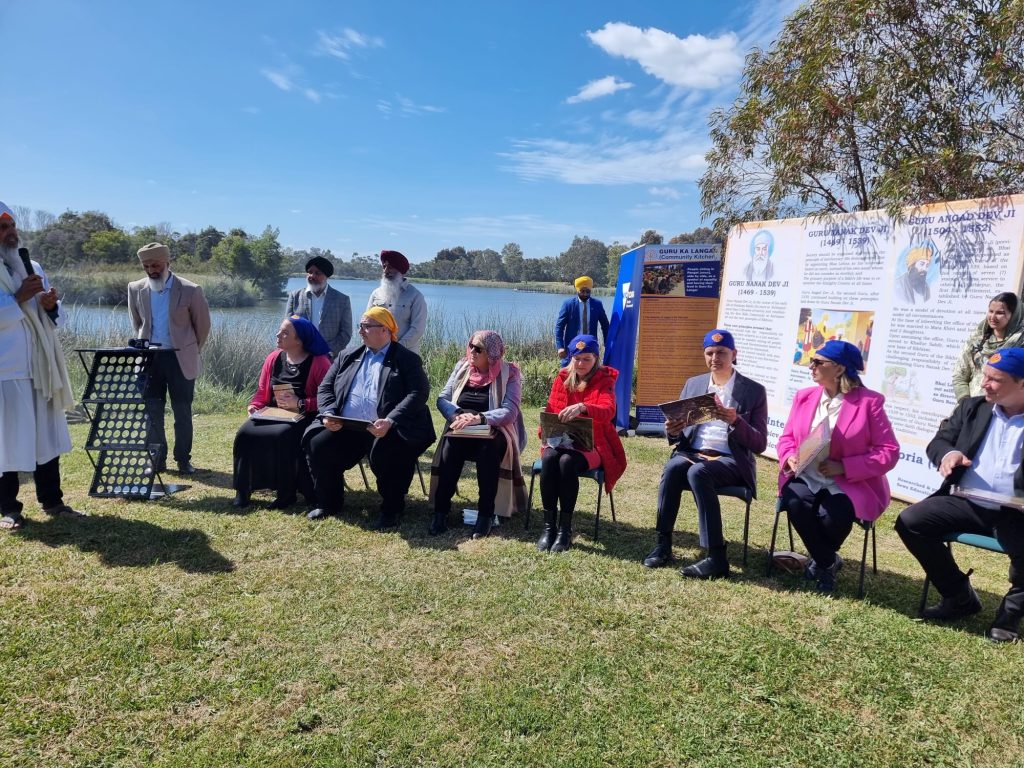The Victorian Labor government is facing backlash after renaming a well-known lake in Melbourne’s southeast without consulting the local community. The lake, previously called Berwick Springs Lake in Narre Warren, has now been renamed Guru Nanak Lake, in tribute to Guru Nanak Dev Ji, the founder of the Sikh faith.

Ministers Ingrid Stitt and Sonya Kilkenny, along with local Labor MPs Gary Maas and Lee Tarlamis, attended the ceremony for the renaming. Minister Stitt, who is responsible for Multicultural Affairs, shared her excitement about the change, stating:
“I’m delighted to be recognising the significant contributions of our Sikh community in Victoria by naming a landmark after the founder of the Sikh faith, Guru Nanak.”
Minister Kilkenny also took to Facebook to announce the change, saying, “It’s official! Lake Guru Nanak in the Berwick Springs Wetlands Reserve! … Remember a Local, Name a Place!”
Despite the government’s enthusiasm, the announcement made on November 9 has sparked outrage among some residents. Critics argue that the name change disregards the established identity of the local community, which has long associated the lake with the Berwick Springs name. A petition on Change.org calling for the renaming to be reversed had gathered over 4,320 signatures by mid-November.

Opponents of the renaming claim that it was done without any community consultation. They argue that Berwick Springs Lake is an important landmark for locals and changing its name feels like a betrayal. The petition reads: “The sudden change of this name, without proper community consultation, has caused enormous distress among residents. Berwick Springs is deeply tied to our community’s identity.”

Michael Ball, the petition’s organiser, voiced his opposition in a comment on Minister Kilkenny’s Facebook post. He stressed that while the local community holds respect for the Sikh community, they felt disrespected by the lack of consultation before the renaming. Ball also highlighted that Berwick Springs Lake is a central part of the local area, and its name has been synonymous with the community for years. He called for the immediate suspension of the renaming and the reinstatement of the original name, Berwick Springs.

The state government, however, stands by its decision. The ministers argue that the renaming is part of a broader initiative to reflect the multicultural identity of Victoria and acknowledge the contributions of various communities, including the Sikh community, which is the largest in Australia.
Kilkenny and Stitt have defended the change, emphasizing that Guru Nanak is viewed by many in the Sikh community as a progressive leader who championed equality, truth, compassion, and community service. The renaming is part of a state-wide effort to rename places in recognition of multiculturalism and significant figures from various cultures.

While some members of the Sikh community have welcomed the move, others have raised concerns about naming public places after religious figures. A comment from a Punjabi Sikh expressed discomfort with the idea, stating, “I don’t think we should be naming landmarks after religious figures unless the landmark’s notability is specifically tied to religion.”
In addition to the renaming, the Victorian government also announced $600,000 in funding to support Sikh organizations in hosting “Langer” events leading up to the 555th anniversary of Guru Nanak Dev Ji’s birth.

The controversy has ignited a debate about the role of religious figures in place-naming and whether such decisions should involve broader community consultation. Local residents continue to question the appropriateness of naming the lake after Guru Nanak Dev Ji, especially given that he has no direct connection to the Berwick Springs area. Some have even pointed out, “Guru Nanak wasn’t exactly a local—he was born in 1469.”
The ongoing debate highlights the tensions between celebrating diversity and preserving local traditions, as the community weighs in on how public landmarks should be named.







